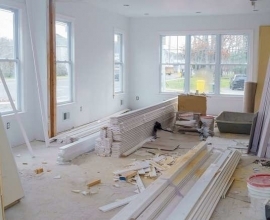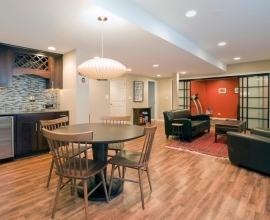House Works Q&A: Wet basement insulation in new home
Q: What’s causing water to drip from behind the basement insulation and vapour barrier in our brand new home? The builder is consulting a building science expert before proceeding with remediation.
A: The builder offering to send a “building science expert” implies that your problem is strange and unique, but I see it happen all the time. I’m sure the builder does, too. There are only two possible sources of moisture. Either condensation and frost have developed between the vapour barrier and the masonry wall during cold winter weather, or liquid moisture is making its way through the masonry wall and running down behind the insulation and vapour barrier as you’re seeing.
Now that things have gotten warmer, has the dripping diminished? If so, then wintertime condensation due to an imperfect vapour barrier is probably the cause. Is the plastic vapour barrier open at the top? The bottom? Given the small amount of moisture I saw in your photos, my guess is that condensation is the source.
Has the moisture increased now that we’re getting spring thaws and rains? If so, then it implies liquid moisture coming through the masonry wall. This is another problem that sometimes occurs. If your basement is poured concrete, then the most likely source of leaks is where ties used to exist to support one side of the forms and the other during construction. Is your basement poured concrete?
The problem you’re having is quite common and I blame it on a poor approach to insulation. Not all homes with fiber batts and vapour barrier in the basement have this issue, but many do. In my opinion building codes everywhere are deficient in allowing the kind of basement insulation you have because they’re so prone to moisture issues and mould. After hearing about many cases just like yours over three decades, I always recommend against any kind of fiber-based insulation on basement walls because it’s so prone to trouble. Foam-based insulation systems are much better for basements, especially foam panels.
Sealing wooden stairs
Q: What’s the best way to finish the Douglas fir stairs in a log home I’ve had built in BC? I’ve seen the stairs at your place in one of your videos and I’d like to know the sanding and finishing steps you used. I want to seal the wood under a protective layer. Should the approach be the same for spindles and railings?
A: The unstained pine stairs, spindles and railings you’ve seen at my place are finished with satin polyurethane, oil-based. The stuff I used back when I built the stairs was Canadian Tire’s own brand and except for one reapplication, it’s the original coating from 1991. Sounds crazy, but this was the best urethane I’d ever used then — even better than the brand name stuff back in the day. Unfortunately, with tightening government regulations, oil-based urethanes like CT’s own brand have disappeared. My current favourite urethane for floors and stairs is Varathane Pro Finisher. It’s one of the only options that I’ve found works every bit as well as my old favourite.
By contrast, most water-based or hybrid urethanes I’ve used these days are disappointing because they dry too quickly, leaving bubbles and brush strokes behind. Pro Finisher dries slowly enough that it flows out well, yet it’s dry to the touch in less than half a day.
As for sanding, I’d use 80- and 120-grit abrasives in that order, then move onto finishing. The wood will feel somewhat rough after the first coat dries, so get rid of the fuzz with 320-grit paper in a quarter-sheet finishing sander to remove this raised grain. Vacuum the surface, then apply at least three coats in all. Four is better. I recommend finishing all stair parts before final construction.
Source: https://bit.ly/2pAnwuq







